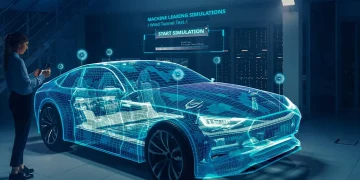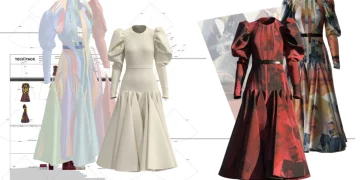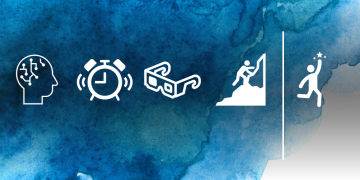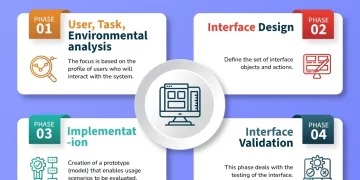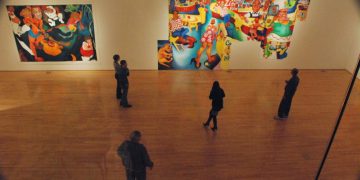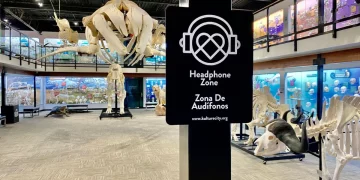Exploring the intersection of technology and cultural experiences
In the age of rapid technological advancements, we find ourselves at a crossroads where digital experiences increasingly shape our world. From virtual reality (VR) art galleries to 360-degree interactive exhibits, the art of exhibitions is being redefined. But as we dive into the digital transformation, a pressing question emerges: Can technology truly replace the experience of a live exhibition? In this article, we will explore the role technology plays in modern exhibitions, its advantages and limitations, and whether it can ever fully replicate the immersive, social, and sensory experience of engaging with art and culture in person.
The Allure of Live Exhibitions
Before delving into the technological side, it’s essential to understand why live exhibitions—whether in the form of art galleries, museums, or trade shows—remain so vital to human culture.
The Immersive Experience
A live exhibition offers an immersive, multi-sensory experience that technology, despite its innovations, often struggles to replicate. The sheer scale and physicality of art, the texture of brushstrokes, the sound of ambient music, or the tactile feel of ancient artifacts create an emotional connection that goes beyond visual representation. Imagine walking through the Louvre, encountering the Mona Lisa in its full glory, or experiencing the energy of an artist’s interactive installation in a contemporary gallery. The atmosphere, the lighting, and even the crowd contribute to an experience that can feel profoundly personal and unique.
Social Interaction and Shared Experience
There is something inherently special about sharing an exhibition experience with others. Whether it’s discussing a piece with a friend, attending an opening night with a community, or simply being surrounded by fellow visitors, the social aspect of live exhibitions fosters a deeper connection to the artwork. Conversations, debates, and spontaneous reactions often contribute to a richer understanding of the pieces on display.
The Physicality and Intuition of the Space
Live exhibitions offer a sense of spatial awareness—how an artwork fits within its environment, how it interacts with the space, and how viewers navigate it. In a live setting, an exhibition can shape its surroundings—whether it’s a grand museum hall, a modest gallery, or an outdoor art installation. Visitors can walk around, pause, take in the full scope of an exhibition, and feel the weight of the piece in the real world. This kind of intuitive interaction is something digital formats struggle to replicate.

Technological Innovations in Exhibitions
While technology may never replace the live experience entirely, its role in enhancing and reshaping exhibitions cannot be understated. Let’s look at some ways in which technology has made its mark in the world of exhibitions.
Virtual Reality (VR) and Augmented Reality (AR)
Virtual Reality and Augmented Reality are perhaps the most groundbreaking tools used in digital exhibitions today. VR technology allows visitors to experience art galleries, museums, and even entire exhibitions from the comfort of their homes. For instance, platforms like Google Arts & Culture offer virtual tours of world-renowned institutions, providing access to pieces that people might never get a chance to see in person.
On the other hand, AR can enhance physical exhibitions. By using smartphones or AR glasses, visitors can gain additional layers of information, interact with the art, or view digital extensions of pieces that are invisible to the naked eye. In museums, AR can help bring static exhibits to life, providing contextual information, animations, or 3D models that create a more engaging experience.
360-Degree Video and Live Streaming
In the past few years, 360-degree videos have become a popular medium for bringing exhibitions to virtual life. Viewers can explore exhibits in all directions from a single point, simulating the experience of being physically present. For example, major museums like The British Museum have made it possible to “walk through” their galleries remotely. In addition, live streaming of exhibition events or live talks with curators and artists brings exhibitions to global audiences in real time. This can be particularly valuable for institutions aiming to engage people who cannot visit due to geographical or financial barriers.
Interactive Displays and Digital Art Installations
Interactive displays are another major advancement in exhibition technology. These allow visitors to interact with the artwork in ways that go beyond simple observation. For example, digital installations may respond to the movements, gestures, or input of the viewer. These installations can be more dynamic and transformative, allowing for a more personalized experience.
The digital art scene itself has blossomed with the advent of technological tools. Digital art, interactive media, and artificial intelligence (AI)-driven creations are becoming increasingly prevalent in modern galleries. In many cases, these works wouldn’t be possible without the aid of technology.
Online and Hybrid Exhibitions
The COVID-19 pandemic significantly accelerated the shift toward online exhibitions, with many physical galleries and museums quickly adapting to virtual spaces. Platforms such as Virtual Museum Tours, Museum of the World, and Artsteps now allow users to explore exhibitions remotely. Hybrid exhibitions, which blend both in-person and digital experiences, are also becoming more common. For example, a live event might feature a physical exhibition in a gallery while also providing a digital version for remote participants.
Advantages of Technology in Exhibitions
Despite the fact that technology may never fully replace the sensory immersion of a live exhibition, its benefits are significant and have transformed how art and culture are shared.
Accessibility and Inclusivity
One of the greatest advantages of digital exhibitions is accessibility. Virtual tours and online platforms enable individuals who are physically disabled, geographically distant, or financially constrained to engage with global art collections. This inclusivity is a step toward democratizing art and culture, offering opportunities for those who otherwise might not have access.
Convenience and Flexibility
Technology offers unprecedented convenience. Instead of traveling across the world to see a famous work of art, viewers can access virtual exhibitions anytime and anywhere. For people with busy schedules or those who live in remote areas, this flexibility can be incredibly valuable. Additionally, online exhibitions can accommodate more people at once than a physical venue can, making them an effective tool for engaging larger audiences.

Enhanced Learning and Engagement
Technology can enhance the learning experience in a way that traditional exhibitions might struggle to do. Interactive elements, immersive VR environments, and the ability to zoom in on artwork details or access supplementary educational content provide more in-depth understanding. AI-based technologies can even guide visitors through exhibitions, offering tailored experiences based on individual preferences.
Environmental Impact
Digital exhibitions, by their very nature, tend to have a smaller carbon footprint than their physical counterparts. They do not require travel, large-scale venue construction, or the use of physical resources to design, print, or transport materials. This makes them an appealing alternative for institutions looking to reduce their environmental impact.
Limitations of Technology in Recreating the Live Experience
Despite its many advantages, technology has inherent limitations when it comes to replicating the live exhibition experience.
Lack of Tangibility and Sensory Engagement
While VR and AR can simulate visual and auditory experiences, they can never fully replace the tactile and sensory engagement of being physically present with an artwork. The texture of a sculpture, the scale of a painting, the subtle use of light in a piece—these aspects cannot be captured through a screen. The sheer act of physically standing in front of a piece of art allows for a deeper connection that is often absent in virtual spaces.
The Social and Cultural Context
One of the intangible aspects of a live exhibition is the social context. Museums and galleries serve as meeting places for people from all walks of life. They host conversations, cultural exchanges, and communal experiences that a virtual environment often lacks. The spontaneity of running into a friend at an art opening, the shared excitement in discussing a piece, and the serendipity of discovering something unexpected are all part of what makes a live exhibition so rich and meaningful.
Technology Fatigue
While digital experiences can be immersive, they also come with the risk of over-saturation. Many people experience what is now called “screen fatigue,” a phenomenon where the constant use of digital devices leads to mental exhaustion. Spending hours in front of a screen to explore a museum or exhibition may lack the vitality of wandering through a physical space.
Digital Divide
Despite the many strides in accessibility, there is still a digital divide. Not everyone has access to high-speed internet, VR headsets, or the latest digital devices. For some people, online exhibitions may still be difficult to engage with. This is a limitation that physical exhibitions, by nature, do not face.
Conclusion: A Synergistic Future
While technology has revolutionized the way we experience art and culture, it is unlikely that it will ever completely replace the unique, tactile experience of attending a live exhibition. Rather than competing with each other, physical and digital exhibitions should be viewed as complementary forces. Technology can enhance the live exhibition experience by providing accessibility, convenience, and educational benefits, while live exhibitions remain essential for their immersive, sensory, and social qualities.
As we move forward, the future of exhibitions is likely to be hybrid, blending the best of both worlds—offering live, in-person engagement while leveraging technology to reach wider audiences and enhance our understanding of art in new, exciting ways.














